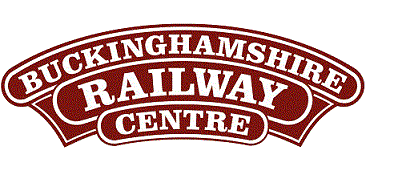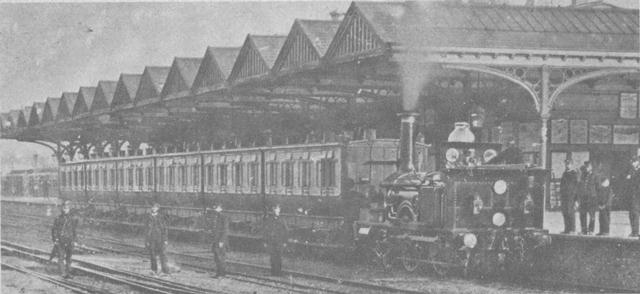
BRC Website Home
Quainton Virtual Stockbook
Rebuilt LSWR 0298 Class 2-4-0 Well Tank No. 0314
Miscellaneous Quainton Publications
The Centenary of the Beattie Well Tank at Quainton

BRC Website Home
Quainton Virtual Stockbook
Rebuilt LSWR 0298 Class 2-4-0 Well Tank No. 0314
Miscellaneous Quainton Publications
The Centenary of the Beattie Well Tank at Quainton
The Well Tanks and the London Suburban Traffic

Photo: |
|
Three months after Joseph Beattie's appointment as Locomotive Engineer he submitted a proposal to the Locomotive Committee for the construction of a tank engine for the suburban traffic. This proposal was for a single driving wheel design with a leading and a trailing axle and when adopted it became known as the Tartar class. The Tartars were undoubtedly the progenitors of the Standard 2-4-0 well tanks because they also had well tanks and had the same general appearance as the four coupled engines. The boilers had round topped fireboxes carrying a large dome with Salter type safety valves and the chimneys were tall, graceful and had copper caps. The class also had the design of leading axle with floating outside axle boxes with leaf springs carried on the lower slide bar. One important difference between the Tartars and the Standard 2-4-0Ts was that the single wheelers had the valve chests above the cylinders and not inside the frames. The six Tartar class were built at Sharp's works at Manchester in 1852 and there were eleven of the very similar Sussex class built at Nine Elms in 1852 and 1853. These were the last single wheelers built for suburban traffic by the South Western. In 1856 a slightly enlarged version of the original design appeared, but as 2-4-0 tanks. These engines were three in number and were known as the Minerva class. They were also built at Nine Elms and were soon at work on the Waterloo to Richmond and Staines services. Their wheel diameters were the same as the Standard 2-4-0T's; leading wheels 3ft 6 in and coupled wheels 5ft 6in. Following the Minervas came a small class of three more 2-4-0 tanks with 5ft 0in driving wheels. These were the Nelson class and they made their debut on the Lymington branch when it opened in December, 1858. The development of the design leading to the Standard engines continued in 1859 when three locomotives were built which had 5ft 9in diameter driving wheels and cylinders of larger diameter. These were called the Nile class and Joseph Beattie introduced an important variation in the ratio of firebox grate area to total heating surface area in the boilers for these engines. In earlier classes of 2-4-0WTs the grate area had been about 9 sq ft but in the Nile class it was increased to 14 sq ft although the heating surface remained within the range of 750 to 800 sq ft. The first Standard well tanks were ordered from Beyer, Peacock and Co. Ltd., Manchester on 20th February, 1862, and delivery to Nine Elms was effected in February and March in the following year. The new engines proved so satisfactory that a second order, further a further twelve engines, was placed immediately with the same manufacturer and other batches followed regularly until 1875. A total of 85 Standard tanks were built, all at Beyer's Gorton Works, except three which were constructed at Nine Elms. These three were Nos 33, 36 and 76 in 1872. The running numbers and building dates of the Beyer products were as follows:
Dimensions varied slightly in different batches but the following particulars are typical of the later batches:
The 85 Standard and the 9 non standard well tanks provided the South Western with their suburban traffic motive power for more than 20 years. Indeed by 1868 more than 30 of the reliable little engines were employed on this work and had displaced tender engines which often had to run tender first, an undesirable practice. The London suburban services expanded considerably in the 1860's. The Kingston loop was completed, the Shepperton branch was opened in 1864 and the Kensington to Richmond service inaugurated in 1869. Traffic on the Hounslow loop, the Windsor line, the Hampton Court branch and the services to Epsom and Leatherhead was well established by 1850, but it was developing as London expanded in the mid-Victorian period. By 1875 the LSWR suburban railway map served by Waterloo was nearly complete and the trains for the commuters of a century ago were worked by Beattie's well tank engines including our No. 314. Reference: |
|
Notes: |
Text © Quainton Railway Society / Photographs © Quainton Railway Society or referenced photographer
Email Webmaster
Page Updated: 15 October 2017